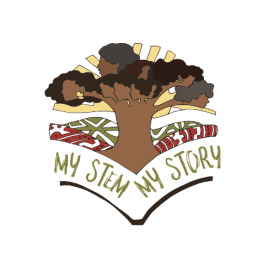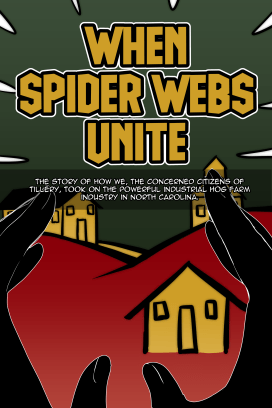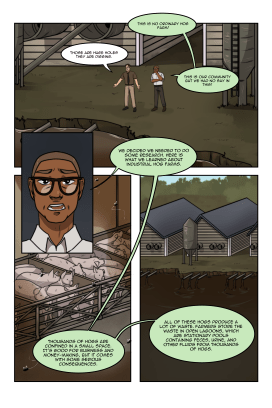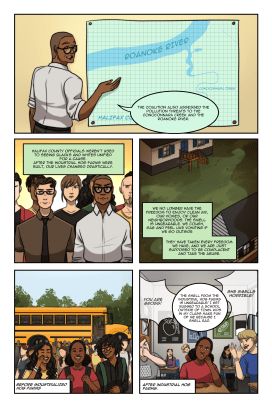Equity Project Spotlight: Using storytelling and a justice oriented STEM after-school club as critical tools for cultivating African American youths' STEM identities
Renee Lyons and Corliss Wilson Outley share more about the Using storytelling and a justice oriented STEM after-school club as critical tools for cultivating African American youths' STEM identities (NSF Award #2214740).
Project Team: Renee Lyons (Clemson University), Corliss Wilson Outley (Clemson University), Gail Awan (Urban League), Rhondda Thomas (Clemson University)
"We hope that every young person that's part of the program can begin to see science as a part of their daily lives...Science impacts what they eat, where they live, how they travel, and even how they play. We want our young people to have a role in being leaders that can not only be involved in what we call doing science but also in ensuring that science and its impact on other youth or families or communities are done equitably."
What inspired you to start the project?

Renee: The project was inspired by the Tillery community in North Carolina. They are a rural, small farming community that is predominantly African American. The community noticed these huge industrial hog farms being built in their community right next to their houses without being consulted. The local government ignored their concerns about what these hog farms would do to their soil and their water and their air, and [community members] continued to do their own research. They found that these industrial hog farms cause a lot of pollution because of the feces that get into their well water and their air.
The Tillery community had a lot of hesitation about partnering with scientists because of [Black people’s] past experiences such as the Tuskegee syphilis experiment, but also personal experiences where researchers talked badly about them or took advantage of them. However, they eventually partnered with an epidemiologist and conducted a scientific study that proved that their air, soil, and water was being polluted by the industrial hog farms. They brought this data to their state government and now there are pauses on the expansion of industrial hog farms.
This was all inspirational to me. I was working with youth when I heard Tillery’s story and wanted to see how science was connected to and could improve the communities that youths live in. Most students are into reading graphic novels and get excited by the arts, so I wanted to find a way to tell Tillery’s story through a graphic novel.

How do you conduct outreach with the communities that you work with?
Corliss: We first partnered with the Urban League of the Upstate because of their connections with the African American community and having an afterschool program. We also partnered with the Littlejohn Community Center, which serves as a historical base in Clemson, SC, for African Americans who have historically lived in this area. It’s also a gathering space for African American and community groups within the city of Clemson. Both of our partner organizations are what I would call the epitome of Black culture within the community, in terms of organizations. They helped us recruit not only African American youth to join the program, but also to get African American adults that are interested in working with young people.
Renee: Our partnerships with these organizations came through a lot of relationship building over time. This was not something where we just reached out to them because we had a grant and we needed a partner. We've been partnering with them. A really crucial part of our relationship is that it didn't just start with the grant—it was nurtured through showing them through the years that we are here for them, and we support them. When this opportunity came up, the Littlejohn Community Center wanted to partner with us because they trusted us. We’re continuing to build that trust too: there are still differences of opinions between community partners which require us to get together over something like dinner and discuss what's going on. Relationship building is key to the how and that is ongoing. It doesn't stop. Once you have the grant you have to keep coming to the table together and keep talking through things.
Corliss: That’s a crucial point in trying to work in a community as scientists. We as scientists want to go into these communities, particularly those that are disadvantaged, and say that we come from a university. However, because we took the time to build these relationships, these community partners don't see us as the scientists that are coming from the ivory tower to tell them what to do. They see that we are truly working “with the community” and creating a true partnership which includes the sharing, the planning, sharing how we're doing the programming, sharing the leadership, even sharing the budgeting. It is truly something that all of us as partners believe in this program. I think you would end up having different outcomes than what you would have in any other project.
Renee: This is an application of what I learned from Tillery. Part of the graphic novel gets into how the Tillery community worked through their distrust and eventually partnered with a White epidemiologist from the University of North Carolina-Chapel Hill. We include quotes from Gary Grant about how we need to question our own goodness and why we are going into a community. Are we going just to try to feel good about ourselves? Or are we truly, truly caring about their needs and what they want? We can’t answer that until we spend time with the community.
That’s kind of the cool part about this whole project: the graphic novel would not have happened without Tillery, but the whole approach wouldn't have happened without Tillary's modeling and teaching us how to truly build relationships with communities.
"A really crucial part of our relationship is that it didn't just start with the grant—it was nurtured through showing them through the years that we are here for them, and we support them."
Renee: We had to work through differences in approaches for youth behavior management early on in the project. The partners on the project have different ideas about how behavior should be managed. We had some people thinking it needed to be more strict and require assigned seats. On the other hand, the leadership team said that the research showed that youth voice is very important. Then we had some others who had an “anything goes” approach to all kinds of behavior.
I learned that, as a leader, I had the responsibility to set the table for all partners to come together. I would admit that early on in the project, I just assumed that would happen. And it doesn't happen naturally, that is on me to create that space and to make sure I'm nurturing not only my relationship with each community partner, but their relationship with each other. And so, we are doing a much better job of that now. But we have room to grow. I think that's something that happens—everybody gets really busy and has their own agenda and their goals. It's absolutely critical that you create space for every single partner to have time to come together and get to know each other and understand where each person is coming from and respect their goals, and then come to a common understanding of the direction of your program.
How do you get feedback from the community? How do you incorporate that kind of feedback they share into your project?

Renee: We’ve built the project so that we receive ongoing feedback from community and youth advisory boards. Having an iterative design means having feedback built in every step of the way. This is the first year that we're running the STEM club. We’re developing the club as we go, which can sometimes be messy, but it also creates space for the youth to influence the direction of the STEM Club.
For example, we used recent feedback from the youths to hire a new curriculum developer. They were telling us that the direction we were going initially might not have been what they needed. Our youths interviewed the candidates and decided who should be the curriculum developer. Each candidate prepared a sample lesson and did a hands-on activity with the kids, and the youth gave feedback. Now we're onboarding this community leader, who also happens to be a pastor with a PhD in chemistry.
The feedback element, for the book and the graphic novel, is the same way. I just can't emphasize how much the youth voice has meant. Hearing their voices doesn’t only show their interest, but it also helps us identify areas for improvement. For example, when I read the book I'm like, “This is so amazing! I love the story!” But, then the youths pointed out formatting things that I never would have noticed, like, “My eyes don't know where to go first” or “This has too many pieces of text.”
Corliss: The final product would have only been useful to a small number of youths, but our goal is to make this accessible to everybody. [Renee] mentioned earlier about partnerships and communities and building trust. As we were developing this partnership, we had this curriculum that was actually developed by the partner, The Urban League. But we were finding some problems. The youth wanted to be more engaged versus feeling as if they were sitting in school.
We had a meeting with the partners like Renee said, sitting at the table to have this discussion and decided, hey, let's open it back up to incorporate a new community instructor that can have more engaging activities for the youth. And the process actually ended up including the youth in interviewing, sitting in, watching the demonstrations. We had evaluation forms for the youth after each [interviewee], and they provided feedback on each individual as they “interviewed” for the actual position. I wanted to bring that up as a good example.

I'll also say that we've gotten feedback from parents. We had a community dinner in December where all of the youth and their parents joined. We had a contest between the different tables and the different groups, all on science information. The parents were in groups with the youth and the groups were answering science questions for points. We were like, 'Wow! They're all involved and learning!” Afterwards, the parents came back to us with feedback and we've been able to incorporate that into the program. Working with partners—and I do emphasize that also means the youth, our community partners, their families, and the community overall—has been an amazing opportunity. The biggest thing is really thinking about what our hopes are for the impacts that we're hoping to see in the future, based on this program.
What impacts do you hope that your project has not, just in the community that you're serving, but in the general informal STEM education fields?
Corliss: We hope that every young person that's part of the program can begin to see science as a part of their daily lives. We have been emphasizing, through some of the activities, that science impacts what they eat, where they live, how they travel, and even how they play. We want our young people to have a role in being leaders that can not only be involved in what we call doing science but also in ensuring that science and its impact on other youth or families or communities are done equitably.
We're hoping that they can tell the stories of their own neighborhoods. Now that they understand the Tillery community and their story, our youths are starting to understand what issues are present in their own communities. We're hoping that a program like this provides that pathway for them to use their voices, to use their leadership, and hone those skills as they embark on this journey of becoming change agents for their schools, homes, and their community. We’re hoping that some eventually become change agents in informal science and that some of them will become civic leaders or scientists. We’re starting to see who will be mentors to their other teams, and helping them light the way and get each other excited about science.
Renee: I’ll also add radical healing, which is the theoretical framework for our work. There's a lot of healing that needs to be done in Black communities specifically related to science. Science has historically been used against Black communities. Those traumatic stories are stories that are still told, and they're ongoing. We still see this with inequities regarding health care related to COVID and maternal health. Black communities are not benefiting from science the way that White communities are. Healing needs to be done. We’re hoping that this project and getting kids engaged in civic action—using science for their communities and to better their communities—will be part of that healing process. We want science to be seen as a tool that anybody can use and isn’t restricted to those who have access to use it for themselves and not for other people. We're hoping that this project can help overcome some fears, but also just serve as an empowerment for black youth to see that science is theirs, and it's for their community, and to make their community a better place.